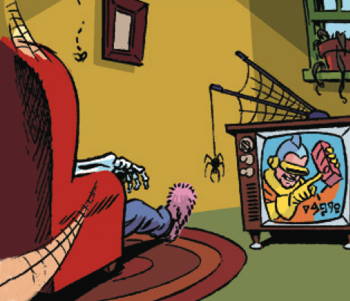September 2021
September 30, 2021
The Tax Centinels
April 1938: Students at Renselaer Polytechnic Institute managed to acquire almost all the pennies in the town of Troy, New York — around 250,000 pennies in total. They did this by first going around store-to-store claiming they needed pennies for a "penny-ante poker game." Then they went to the banks and purchased their entire supply of pennies. Since each bank was unaware that the same thing was occurring at all the other banks, they happily sold the students all the pennies they had.As a result, the town of Troy suddenly discovered that it was in the grip of a "penny famine." Shopkeepers found themselves unable to make change. And more significantly, they found it difficult to charge the state sales tax.
This had been the point of the stunt. It had been organized by a group of students calling themselves the "Tax Centinels" in order to "focus public attention on the taxes which they claim account for 25 per cent of the cost of all necessities of life."
Having cornered all the pennies, the students went into the town the next day and began making purchases, using pennies to pay for one-quarter of whatever the cost of the item was. It was a bit like the time-honored stunt of paying fines with pennies.

Philadelphia Inquirer - Apr 6, 1938
The movement quickly spread to other colleges, so that other college towns were soon beset by penny famines. New members of the Tax Centinels were required to take the following pledge:
It shall be the purpose of this organization to focus public attention on the evils of the practice of keeping concealed taxes and to awaken in the public consciousness a realization that 70 per cent of all taxes now collected by more than 175,000 separate taxing bodies in the United States are obtained through secret levies tacked on to the price of necessities we all must buy daily—food, clothing, shelter, luxuries, and semi-luxuries.
Since the average man does not realize the inroads made upon his purse by these vicious hidden taxes and that he himself pays the major costs of the government instead of the Rockefellers, Morgans and du Ponts, I hereby pledge myself to pay 25% of the price of all purchases in pennies in order to dramatize the situation to the end that it may be remedied.

Wisconsin State Journal - Apr 11, 1938
As far as I can tell, the Tax Centinel movement lasted a month or two before fizzling out. But it seems to have been symptomatic of a widespread popular discontent at the time over the sales tax. See, for instance, our earlier post about the guy who in 1939 took a case all the way to the supreme court over his indigation at having been, in his mind, unfairly charged one-half cent of sales tax.
More info: "Tax Centinels," Star and Lamp (Pi Kappa Phi newsletter) - May 3, 1938. Page 4.
Posted By: Alex - Thu Sep 30, 2021 -
Comments (3)
Category: Money, 1930s, Universities, Colleges, Private Schools and Academia, Pranks
John Cameron Swayze Board Game
A board game with built-in obsolescence. Not the brightest notion.The entry at Board Game Geek.
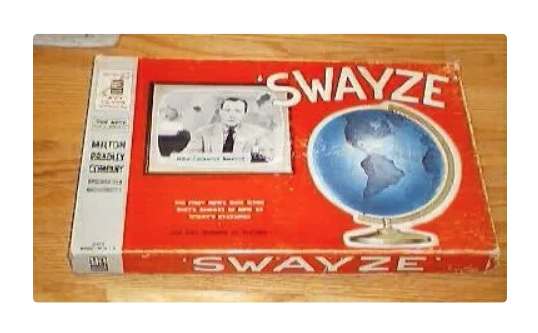
Swayze is a Quiz game based on today's news. The players take turns acting as the Quizmaster who thinks of a news item from recent headlines, using a special map of the world. The other players are panel members who try and identify the news event by asking questions. John Cameron Swayze lends his name to the game. Yes the same John Cameron Swayzee of TIMEX watch commercials fame. Back when this game was around Swayze was doing the evening news and was a pretty famous and well recognized newsman and TV celebrity.
A book comes with the game that has current events listed for different areas of the world just in case the Quizmaster cant think of any for a particular area of the world. Some examples of what's in the book; Mount Everest conquered by Hillary May 1953, Ben Hogan wins British Open July 1953, US Forces enter Korea south of 38th Parallel Jul 1950, Mohandas Gandhi assassinated Jan 1948.
Posted By: Paul - Thu Sep 30, 2021 -
Comments (2)
Category: Games, Television, Current Events, Headlines and Topicality, 1950s
September 29, 2021
The Piano-Smashing Fad
The fad of piano smashing reportedly began in 1963 at a technical school in Derby, England, but it quickly spread to American campuses via Caltech, where a "Piano Reduction Study Group" was formed.The goal of piano smashing was "to reduce the piano, in the shortest possible time, to such a state that it may be passed through an aperture of 20 cm. in diameter." This was to be done by a maximum of six people using tools no heavier than 15.4 pounds each.
A record-setting time was achieved by students at Wayne State University who smashed a piano and passed it through a hole in 4 min 51 sec.
I wonder if this college fad was the inspiration for the Destructivist Art Movement, which emerged three years later, and also involved smashing pianos.

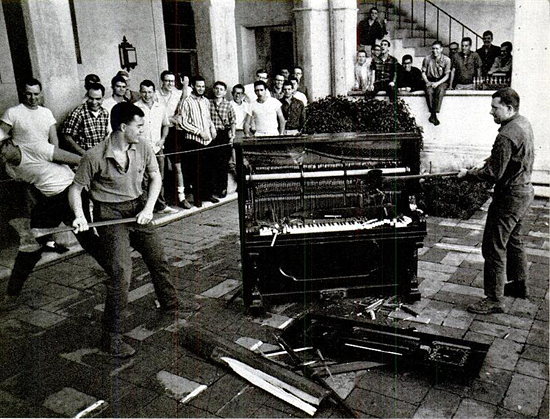
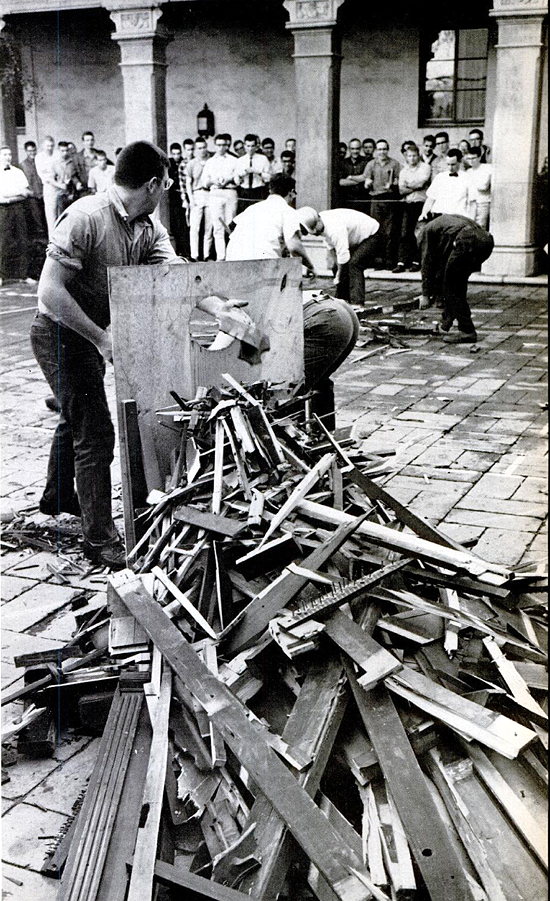
Source of images: Life - Mar 8, 1963
Posted By: Alex - Wed Sep 29, 2021 -
Comments (4)
Category: Fads, 1960s, Universities, Colleges, Private Schools and Academia
The Cola Queens
So far as I can tell, these beauty queens hailed from a single year's contest in British Guiana.Read about it here.
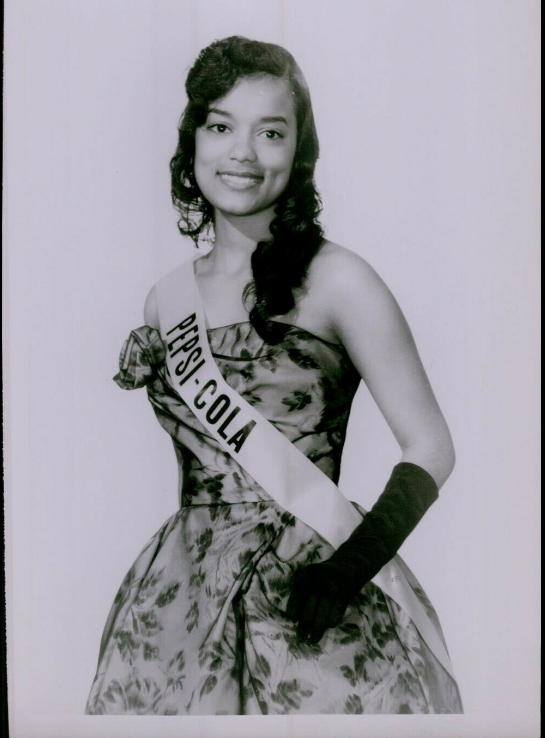
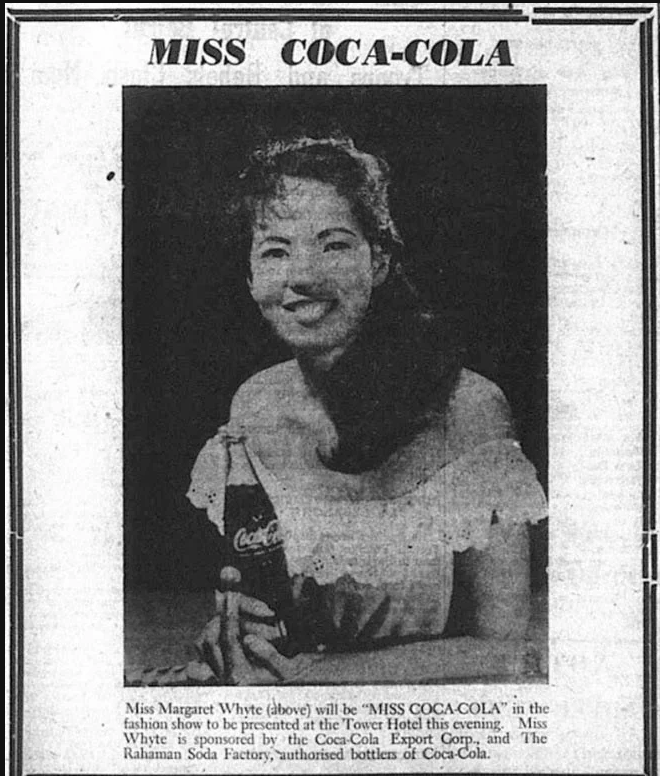
Posted By: Paul - Wed Sep 29, 2021 -
Comments (1)
Category: Awards, Prizes, Competitions and Contests, Beauty, Ugliness and Other Aesthetic Issues, Soda, Pop, Soft Drinks and other Non-Alcoholic Beverages, 1950s, South America
September 28, 2021
Kmarto Wine
In the mid-1980s, K-Mart stores in Gainesville, Florida introduced a K-Mart-branded wine, which they called Kmarto. It cost a mere $1.97, and was available in both a red and white variety.Very little information remains about Kmarto. For instance, I don't know how long it was sold. Just a few years, I think. As far as I know, it was never sold outside of Gainesville.
I was only able to find one picture of a bottle of the stuff — on, of all places, The Horse Doctor (a veterinarian's blog):
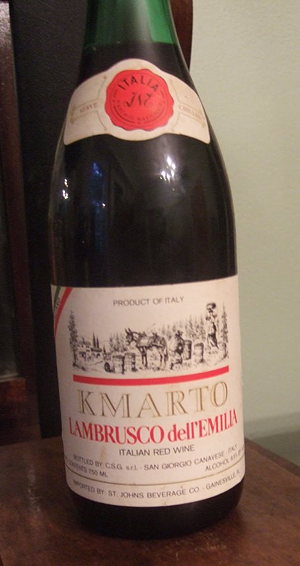
If you happen to still own a bottle of this stuff, I'm sure you could easily sell it for a couple of hundred dollars, because it's definitely a collector's item. As Paul Kirchner has reported in his book Oops!:
Posted By: Alex - Tue Sep 28, 2021 -
Comments (4)
Category: Inebriation and Intoxicants, Alcohol
Advice for Doctors, 1948
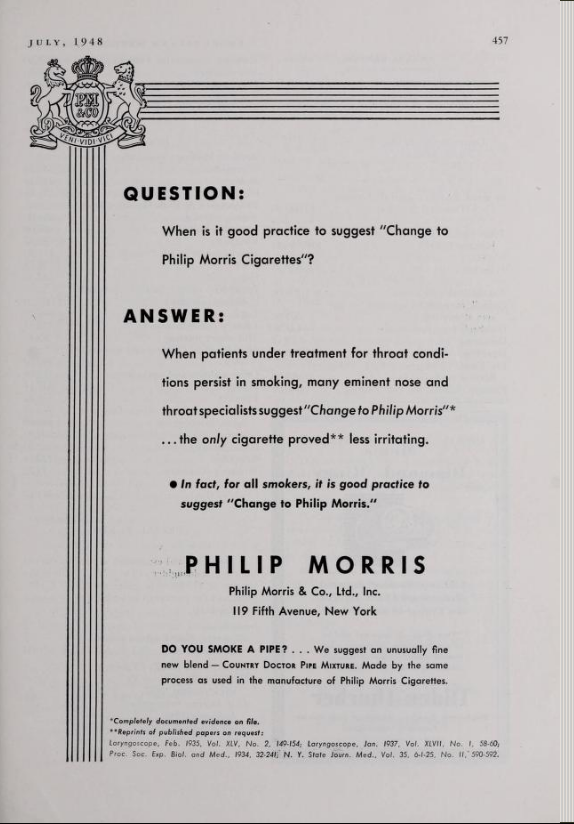
Posted By: Paul - Tue Sep 28, 2021 -
Comments (2)
Category: Medicine, Smoking and Tobacco, 1940s
September 27, 2021
Vanguard Tobacco-Free Cigarettes
Vanguard cigarettes, which came on the market in 1959, were advertised as containing no tobacco tars, no nicotine, and no arsenic. So what did they contain? It was a mystery substance called 'Fibrila'.The FDA examined a sample of Fibrila and determined it was a blend of "sugar cane bagasse, licorice and corn silk." But mostly corn silk.
Corn silk is that stringy stuff you have to remove before eating an ear of corn. Apparently it's long been a popular tobacco substitute among teenagers denied access to real cigarettes. And it's possible to make a tea out of it as well.
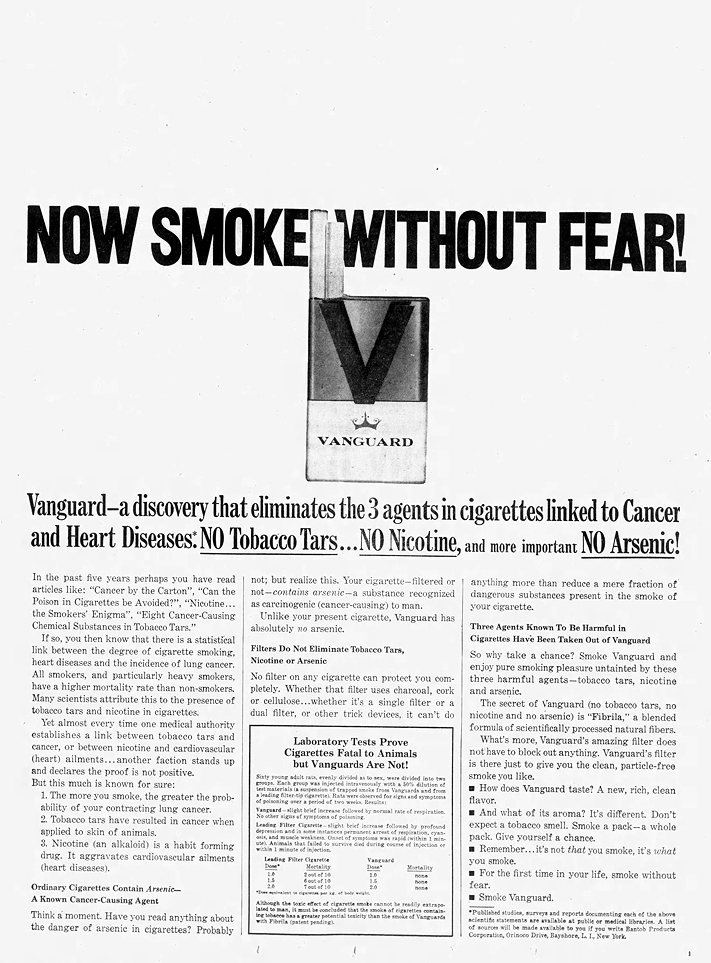
The Hackensack Record - Sep 24, 1959
Posted By: Alex - Mon Sep 27, 2021 -
Comments (5)
Category: Smoking and Tobacco
Follies of the Madmen #516
Some wild and dubious claims for this metal briefcase.Source.
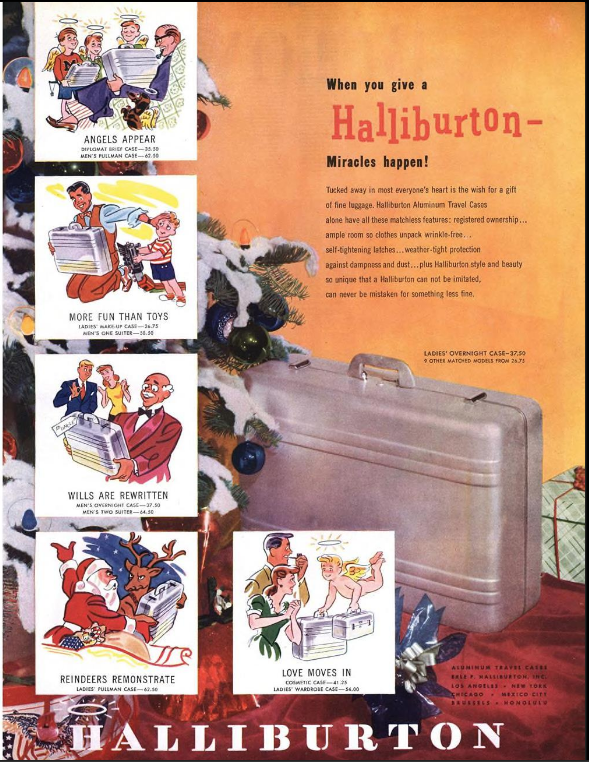
Posted By: Paul - Mon Sep 27, 2021 -
Comments (3)
Category: Business, Advertising, Excess, Overkill, Hyperbole and Too Much Is Not Enough, Family, 1940s
September 26, 2021
Wham-O’s Sunvu
It protected your face from the sun... just like a hat. While looking more ridiculous.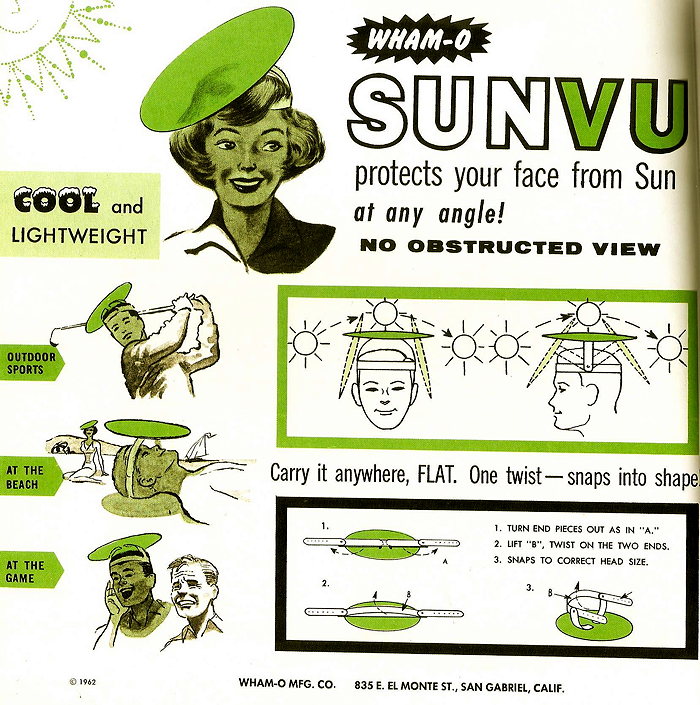
image source: flashbak.com
Posted By: Alex - Sun Sep 26, 2021 -
Comments (1)
Category: Headgear, 1960s
Hypnosis in Minutes—Tonight!

Source.
Posted By: Paul - Sun Sep 26, 2021 -
Comments (5)
Category: Drugs, Hypnotism, Mesmerism and Mind Control, 1940s
| Get WU Posts by Email | |
|---|---|

| Who We Are |
|---|
| Alex Boese Alex is the creator and curator of the Museum of Hoaxes. He's also the author of various weird, non-fiction books such as Elephants on Acid. Paul Di Filippo Paul has been paid to put weird ideas into fictional form for over thirty years, in his career as a noted science fiction writer. He has recently begun blogging on many curious topics with three fellow writers at The Inferior 4+1. Chuck Shepherd Chuck is the purveyor of News of the Weird, the syndicated column which for decades has set the gold-standard for reporting on oddities and the bizarre. Our banner was drawn by the legendary underground cartoonist Rick Altergott. Contact Us |
